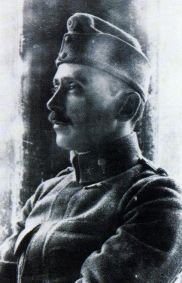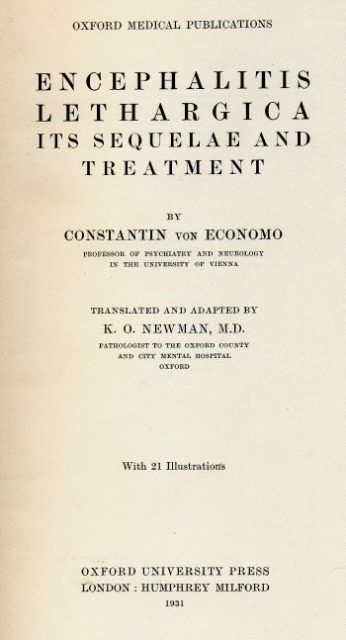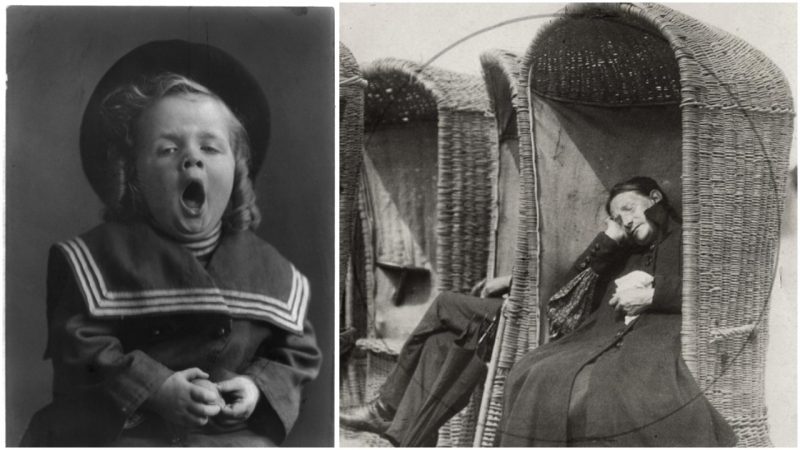Just after the end of World War I, a bizarre disease known as the sleepy sickness, or lethargic encephalitis, devastated millions of people across the world and left doctors puzzled for decades afterward. According to some sources, around 1 million of those affected by the disturbing illness died, while many others were transformed into living statues and spent the rest of their lives trapped inside their bodies and locked in institutions, speechless and motionless.
Some of the finest scientific minds of the past 100 years have tried to provide the answers to what exactly caused the horrifying disease, or how to treat it, but, to date, nothing has been definitively proven and the sleepy virus remains one of the biggest medical mysteries of history.
The brain illness spread around the globe at the same time as the Spanish flu pandemic that killed over 50 million people, which explains why the sleeping-sickness epidemic has been largely overlooked by history, despite the fact that it left about 1 million people dead and deeply affected the lives of millions more.
Although most cases were reported months after World War I ended, it is believed that the epidemic began in 1915 or 1916 when soldiers who displayed incredible lethargy and confusion were examined by doctors in Paris. At first, they assumed that the main cause of these rather unusual symptoms was mustard gas, which had been used during the war, but their assumption proved to be wrong.

A neurologist from Vienna named Constantin von Economo wrote a paper, “Die Encephalitis lethargica,” in which he gave an extensive description of the illness after witnessing similar cases in civilians. It didn’t take long before his name became associated with the new disease and lethargic encephalitis became known in Vienna as von Economo disease.
“We are dealing with a kind of sleeping sickness, having an unusually prolonged course. The first symptoms are usually acute, with headaches and malaise. Then a state of somnolence appears, often associated with active delirium from which the patient can be awakened easily. He is able to give appropriate answers and to comprehend the situation. This delirious somnolence can lead to death, rapidly, or over the course of a few weeks. On the other hand, it can persist unchanged for weeks or even months with periods lasting bouts of days or even longer, of fluctuation of the depth of unconsciousness extending from simple sleepiness to deepest stupor or coma,” wrote von Economo in his classic description, published in 1917.
Several years after von Economo published his paper, the horrifying epidemic began marching from house to house, taking its toll in human lives and leaving millions of people trapped in their own bodies.
Encephalitis lethargica literally translates to “brain inflammation that makes you tired,” but as mentioned above, it was commonly known as “sleepy sickness.” Sounds funny? Well, it wasn’t. At least not when one considers the numbers. Most accounts state that over one-third of those infected died, while around 20 percent survived but were more or less dependent on professional care. Sadly, less than one-third made full recoveries.
It affected people of all ages, but the most vulnerable to the disease were young people of between 15 and 35 years. From what is known, the initial stages of the infection were no different than that of flu infection: a high fever, headache, feeling tired, runny nose. There was no way for the infected to know that he or she was battling a deadly disease, which gave the virus just enough time to spread into the brain.

Autopsies performed by von Economo determined that one of the main causes of death was a swollen hypothalamus. The hypothalamus is a small section of the brain that has a vital role in controlling many functions, among which is sleep. The inflammation of the hypothalamus caused by the infection led to damage of this section of the brain, which in many cases proved to be fatal.
About 10 years after von Economo published his description of the disease, the encephalitis lethargica epidemic began to disappear. While many scientists were convinced that encephalitis lethargica was a disease of the past, trapped somewhere between the pages of history, virologist Professor John Oxford thought that the game was not yet over. “I certainly do think that whatever caused it could strike again. And until we know what caused it we won’t be able to prevent it happening again,” he told the BBC.
Encephalitis lethargica did strike again, just as Professor John Oxford predicted. In 1993 a young girl named Becky Howells was diagnosed with the largely forgotten disease, and it took several years before she recovered. Since then more cases have appeared, and with the help of his colleagues Professor Oxford was able to point out the similarities between the patients.
It was concluded that many of the patients had sore throats before encephalitis lethargica struck, which, according to research conducted by doctors Russell Dale and Andrew Church, was due to a rare form of streptococcus bacteria. They noted that the massive immune reaction to the bacteria caused the immune system of the infected to attack the brain, resulting in brain damage.
It was certainly a groundbreaking discovery, but it hasn’t been definitively proven that the rare form of streptococcus bacteria is the cause of the disease. Research continues, and for now, encephalitis lethargica remains one of the biggest medical mysteries of all time.
